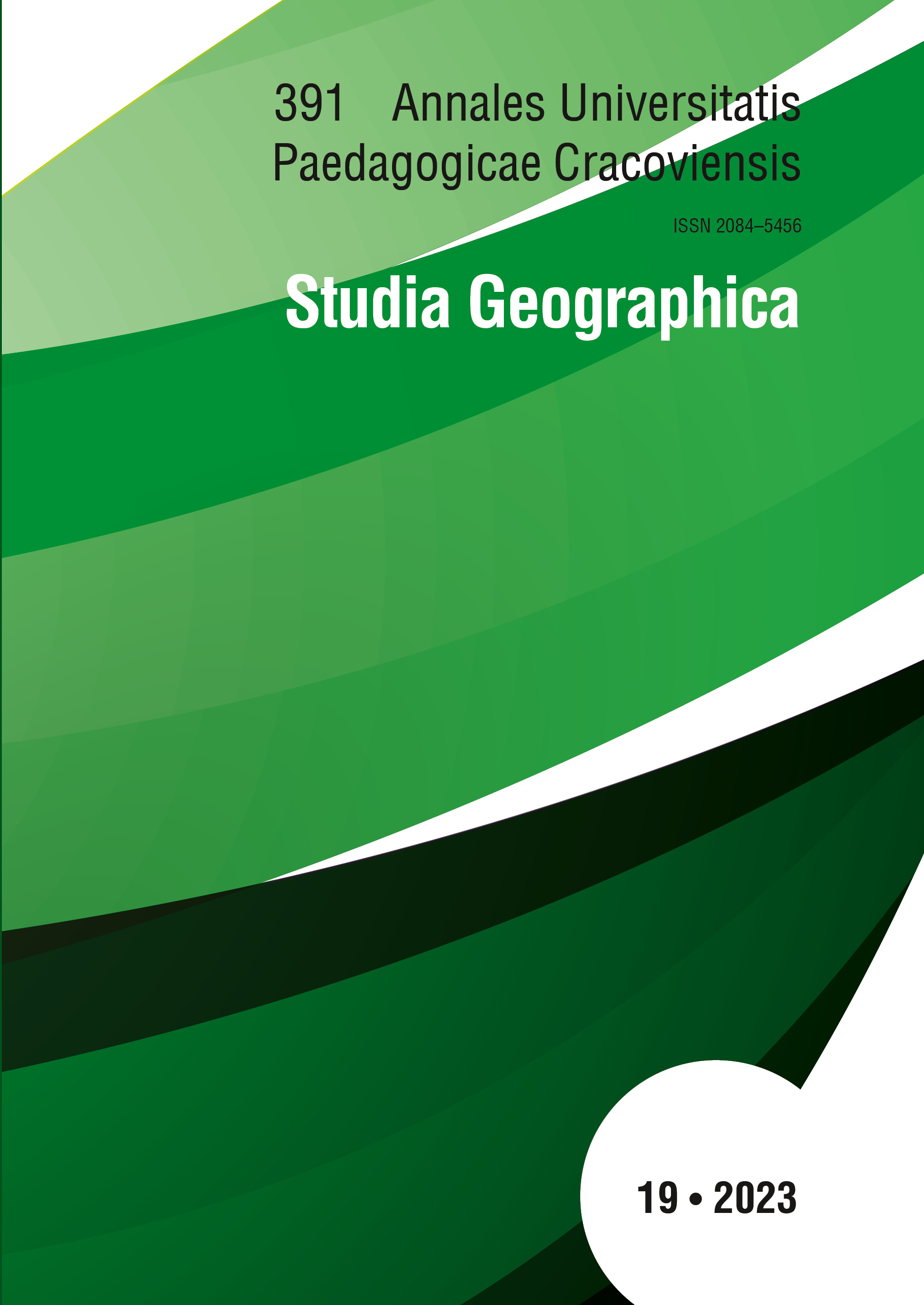The diversity of the migration routes and their intensity regarding the communes constituting the Lubelskie Voivodeship in the years 2000–2020
DOI:
https://doi.org/10.24917/20845456.19.8Keywords:
migration routes, Lublin Metropolitan Area, internal migration, Lubelskie VoivodeshipAbstract
The subject of the thesis is the diversity of the migration routes and their intensity regarding the communes (PL: gmina) constituting the Lubelskie Voivodeship in the years 2000–2020. The migration process significantly affects the economic and social status of the society causing, among others, depopulation of the regions. The aim of the study was to present the diversity of population movements within the voivodeship. Numerous variable measurements were taken was adopted to evaluate the data collected by Statistics Poland (PL: Główny Urząd Statystyczny). Studies have shown growing depopulation, especially in smaller towns. In addition, the process of suburbanization is gradually taking place, with population migrating especially from the city of Lublin, which at the same time remains a particularly attractive location to live to other citizens of the Lubelskie Voivodeship, to its suburban areas. Furthermore, the analysis has revealed substantial disparities between regions. It is important to implement measures aimed at mitigating disparities among municipalities to foster the overall development of the entire Lubelskie Voivodeship.
References
Bank Danych Lokalnych. Główny Urząd Statystyczny. Pozyskano z: https://stat.gov.pl/ [dostęp: 20.08.2023]
Anacka, M., Okólski, M. (2018). Migracje: pojęcia i metod. W: A. Kaniewska, M. Pluta (red.), 25 wykładów o migracjach. Warszawa: Wydawnictwo Naukowe Scholar.
Jelonek, A., Soja, M. (2013). Podstawy geografii ludności. Kraków: Instytut Geografii i Gospodarki Przestrzennej UJ.
Kurek, S., Gałka, J., Wójtowicz, M. (2014). Wpływ suburbanizacji na przemiany wybranych struktur demograficznych i powiązań funkcjonalno‑przestrzennych w Krakowskim Obszarze Metropolitalnym. Kraków: Wydawnictwo Naukowe UP.
Lewandowska‑Gwarda, K., Antczak E. (2015). Migracje wewnętrzne w polskich miastach – analiza z wykorzystaniem przestrzennej dynamicznej metody przesunięć udziałów. Roczniki Kolegium Analiz Ekonomicznych, 39, 119–133
Ministerstwo Rozwoju Regionalnego (2013). Kryteria delimitacji miejskich obszarów funkcjonalnych ośrodków wojewódzkich.
Okólski, M., Fihel, A. (2012). Demografia. Współczesne zjawiska i teorie. Wydawnictwo Naukowe Scholar, Warszawa
Petrov, K., Marinov, P. (2020). Development of suburbanization in Europe. Journal of Bio‑based Marketing, 3(1), 71–81
Rosner A. (2014), Migracje wewnętrzne i ich związek z przestrzennym zróżnicowaniem rozwoju społeczno‑gospodarczego wsi. Wieś i Rolnictwo, 1 (162).
Śleszyński, P. (2006). Demograficzny wymiar suburbanizacji. W: S. Kozłowski (red.), Żywiołowe rozprzestrzenianie się miast. Narastający problem aglomeracji miejskich w Polsce. Polska Akademia Nauk, Komitet „Człowiek i Środowisko” przy Prezydium PAN, Białystok, Lublin, Warszawa.
Wesołowska, M. (2011). Migracje ludności i ich skutki w regionie peryferyjnym (na przykładzie województwa lubelskiego. Barometr regionalny, 3(25), 59–65.
Winiarczyk‑Raźniak, A., Raźniak, P. (2012). Migracje wewnętrzne ludności w polskich obszarach metropolitalnych u progu XXI wieku. Kraków: Wydawnictwo Naukowe Akademii Pedagogicznej.
Downloads
Published
Issue
Section
License
Copyright (c) 2024 Annales Universitatis Paedagogicae Cracoviensis Studia Geographica

This work is licensed under a Creative Commons Attribution-NoDerivatives 4.0 International License.
The submission of a paper to be published is synonymous with an agreement to transfer the copyright free of charge from the author to the publisher. The author also agrees to permit the publisher to publish the paper in printed form, open access online form, digital library form and other digital platforms with which the publisher has or will have a publishing agreement. Furthermore, the author agrees to not limit the number of copies that may be printed or issued by the publisher. In the case of co-authored papers, it is assumed that the corresponding author is authorized to represent the remaining co-authors in this respect. Authors are requested to sign a copyright declaration.

